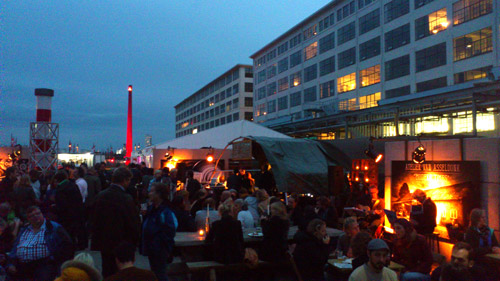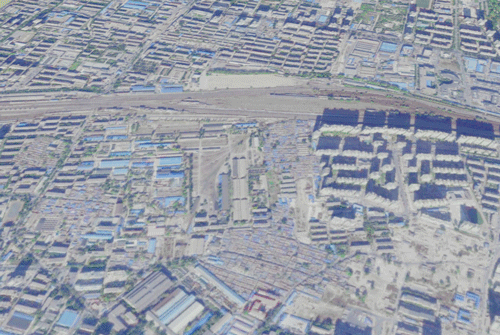Now Future is the motto of DDW 2013. Or should it be ´back to the future´? Much of the furniture design is strongly inspired by the early 1960´s: curved chairs and beautifully light tables made of plywood, such as the +table. And an electric retro moped by Meijsmotor that looks like it could be part of Easy Rider or Mad Max. There is much attention for mobile and modular elements, such as plug-in table legs and lamps on wheels, big 3d printed Lego blocks called BB-Bricks to build flexible interior walls, and a long-life modular cellphone.

At the same time the Design Week shows renewed interest in personal craftsmanship and labor-intensive products. In the 4 Apostelen church, HuisVeendam presented a material library of custom made Bio Laminates, to be used in walls, furniture and in the future also floors. On the mezzanine, Studio 1:1 and DS Landscape architects show their Biological Clock, a complete inventory of bird and plant life around a certain hospital building. Nature is known to benefit the healing process. The year round, breeding, nesting and flower periods for all species are written down a gigantic clockworks scheme. At another location, there were the home made sweaters of Loes, a lady from a worker class neighborhood in Rotterdam, who has knitted 500 colorful sweaters in her life, none of which are being worn by anyone.

Like in DDW 2012, also this year there is lots of attention for food and health. A special workshop with designers and farming experts is held under the name AgriMeetsDesign. Among the designers of the Design Academy Graduation Show, there are a user friendly insulin dispenser for children, the comfort of a friendly fake man, a home smoking unit for fish and sausages and a Do it Yourself Chicken (with DVD guide for plucking etc.).


Perhaps, one of the most striking ideas for the future comes from the Design Award 2013 winner of the ´future concept´, Arne Hendriks. His project, ´The Incredible Shrinking Man´ shows us the benefits of becoming smaller as human beings (apparently 50 cm is the ideal size!), and challenges the common opinion that growing and being big is better.


















